The Hong Kong Global Geopark comprises eight sites in eastern HK.
The Hong Kong Global Geopark (香港世界地質公園) opened in November 2009. As the name indicates, this “park” features sites with interesting geology. Rather than being a single area, the geopark includes eight sites (and combinations of sites) in eastern Hong Kong.
Here, there are Hong Kong’s oldest and youngest rocks, ranging from 400 million to 65 million years old, as well as Hong Kong’s star rock formation – the columnar jointed volcanic rocks, of a kind known as tuff.
Though elsewhere in the world there are columnar jointed basalt lavas – famously including the Giant’s Causeway in Ireland, and Devil’s Tower in the US, nowhere else has such extensive or spectacular columnar-jointed tuff. The rock indeed appears to be in columns, with hexagonal cross sections and up to a metre or more across. Other rocks include highly contorted sediments with fossils such as ancient fish, and the finely layered mudstones of Tung Ping Chau.
The eight sites are as follows.
Ma Shi Chau, Lai Chi Chong and Bluff Head
This “site” spans three localities along the shores of Tolo Channel.
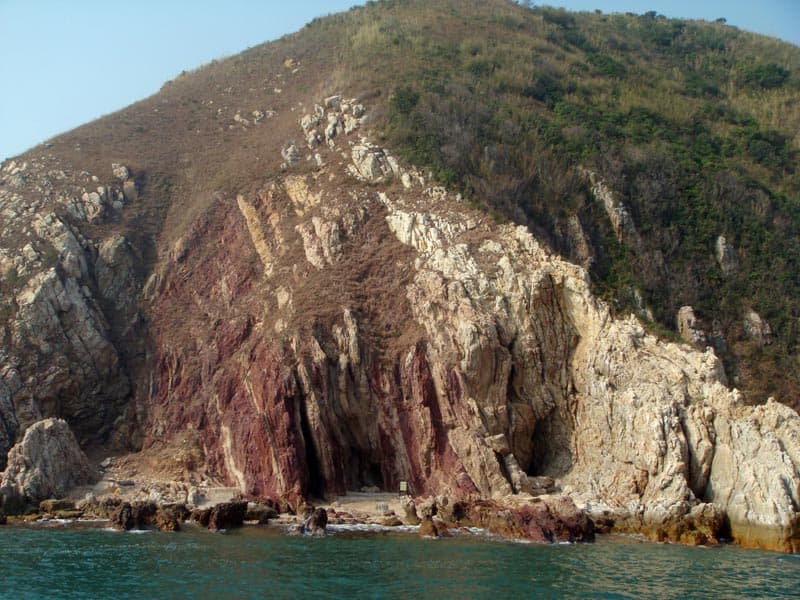
Sedimentary rocks are of note here, especially at Bluff Head (above) where the Devonian sandstones, mudstones and conglomerates are the oldest rocks in Hong Kong, dating from around 400 million years ago. They evidently formed on a coastal plain. These rocks have been strongly folded; there are also faults, including one that has (effectively) dropped 250 million year old Early Cretatceous sediments down to form the north of the headland.
Bluff Head is tough to reach – accessible only by a boat, or a long hike from near Plover Cove Reservoir, but you can see it from ferries heading out through Tolo Channel.
Lai Chi Chong also has sediments, laid down in a lake, with material from eroding volcanoes. There are volcanic rocks, too, especially tuffs formed from volcanic ash.
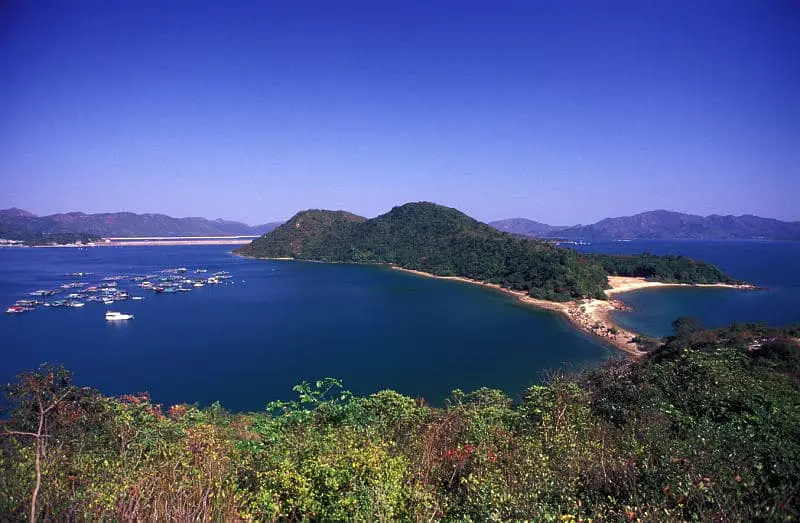
Ma Shi Chau – its Chinese name meaning Horse Excrement Island (!) has old sedimentary rocks you can easily get to. There’s a nature trail with information signs, albeit info is not complete. A tombolo – sand spit – leads to the island from neighbouring Yim Tsin Tsai.
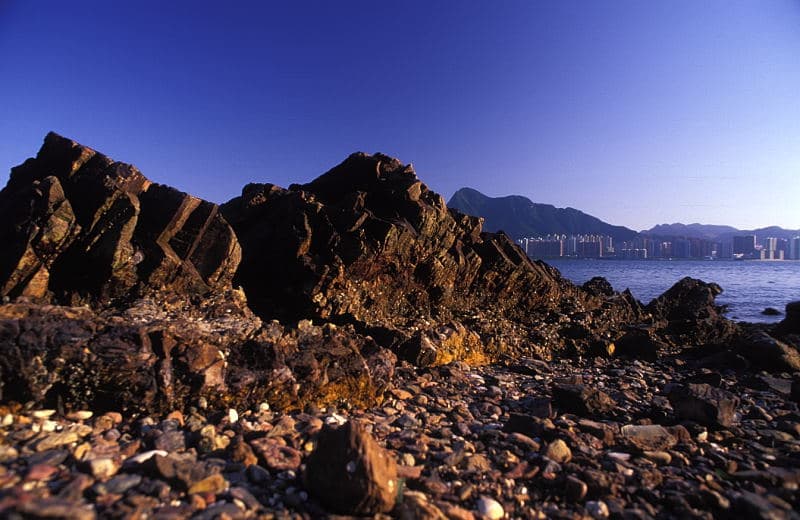

There are exposures of rocks along the southern coast; though none are really striking, this coast makes for a pleasant walk, and you can see features such as Lung Lok Shui – a hard band of rock people have dubbed a Dragon Diving into the Water, as well as smaller quarzt bands, and ripple like kink-bands on strongly folded, reddish brown sandstone.
Double Haven
In the northeast New Territories, Double Haven is a natural harbour ringed by a stretch of mainland coast and the nearby shores of Double Island, Crescent Island and Crooked Island.
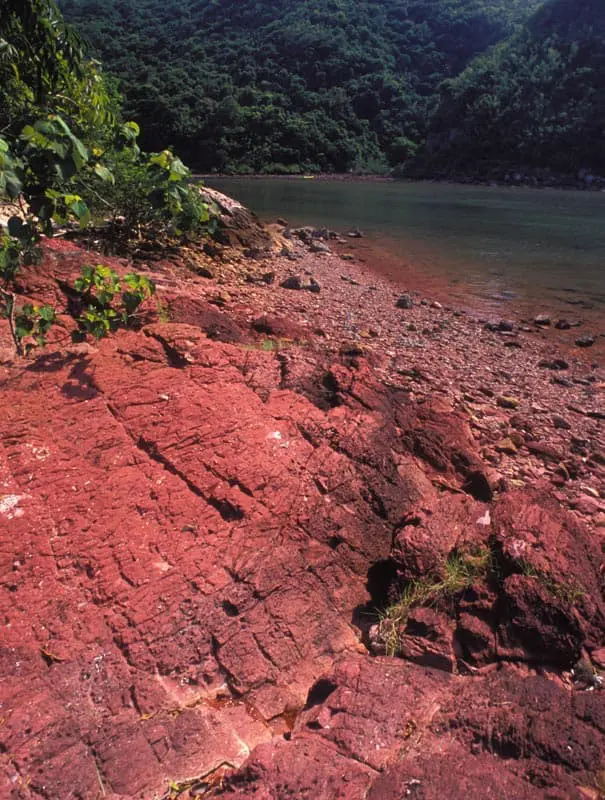
Here, there are both volcanic and sedimentary rocks, the most striking of which are the ruddy sandstones and siltstones known as “red beds”. They formed during deposition in a basin with a desert-like climate, where iron oxidised to result in the strong red colour.
Volcanic rocks in eastern Double Haven may have formed locally, as lava squeezed through vents along a small fault. At tiny Ap Chau, northwest of Double Haven proper, the rock is talus, with rough chunks of rock in sandy substrate – it probably formed as debris fell to the base of cliffs that have long since eroded away.
Port Island (Chek Chau)
Port Island likewise has a mix of volcanic and sedimentary rocks. It’s the sedimentary rocks that are of most interest – they are red beds, formed in a large basin that occupied much of present day Mirs Bay. The island’s rugged, tough to reach.
Tung Ping Chau
In eastern Mirs Bay, Tung Ping Chau is fashioned from the youngest rocks in Hong Kong, roughly 65 million years old. They’re mostly fine grained, finely banded mudstones that formed in a lake, which at times dried up or partially dried up in the arid climate. The east coast is gentle, with beaches, and rocks dipping into the sea.
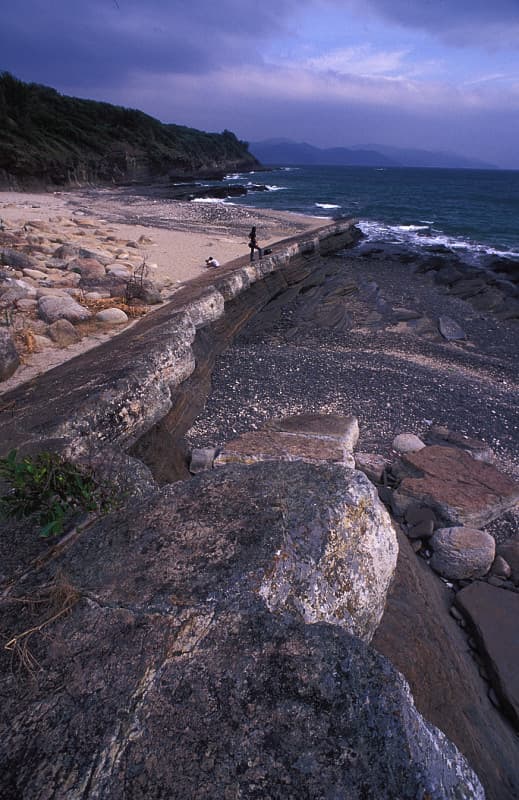
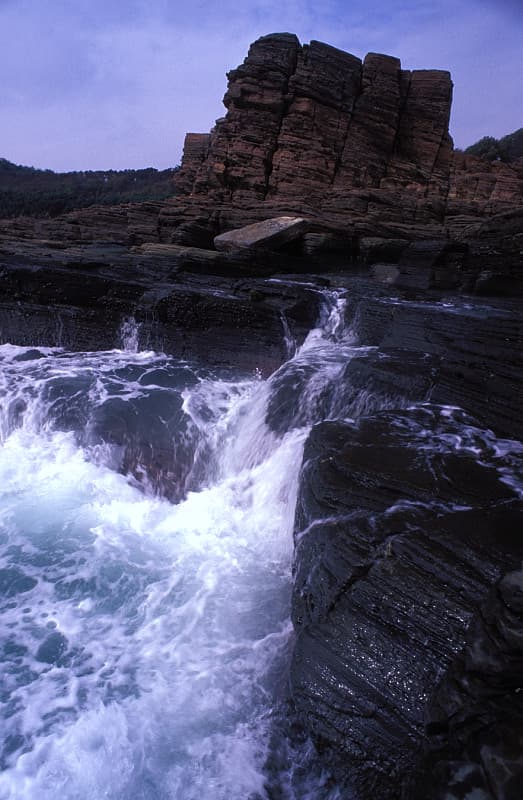
There are low cliffs along the western and southern coasts, with features including a far grander Lung Lok Shui (here, has been translated as Dragon Descending to the Water) than at Ma Shi Chau, as well as two small sea stacks on a wave cut platform in the southeast.
See also Tung Ping Chau article on this site.
Sharp Island (Kiu Tsui Chau)
Sharp Island lies just south of Sai Kung – it’s easily reached from Sai Kung. The main rocks are volcanic tuffs, together with granite-like quartz monzonite – which may have formed deep within a long gone volcano, together with some sedimentary rocks formed in a basin between volcanoes that were still active.
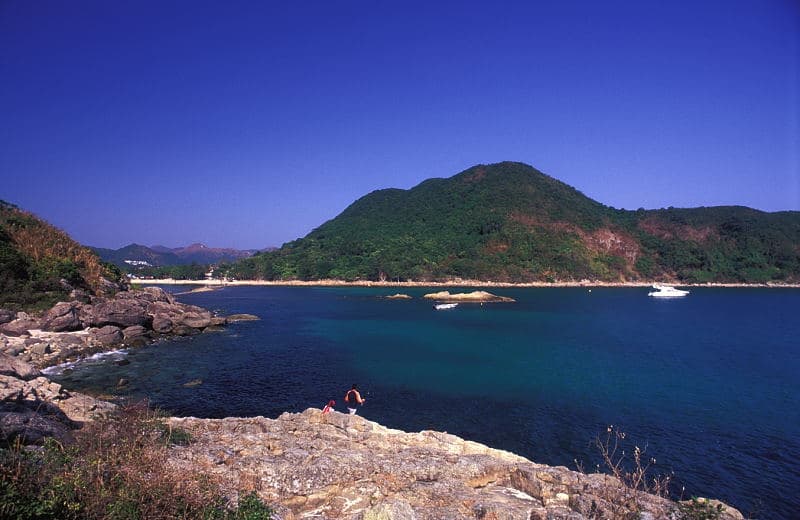
Unless you’re a geologist, the rocks aren’t exciting to look at (even then, maybe not too thrilling!), but there are also small beaches, with corals close inshore, and a tombolo you can walk across at low tide, to Kiu Tau – where it’s fun to scramble over boulders along the coast (take care, though).
High Island and Sai Wan
The Geopark’s key rocks – columnar jointed tuff – formed as a mighty volcano collapsed, in an area that includes the south of the present-day Sai Kung Peninsula in the north, and the Ninepin Group of islands in the south. Incandescent volcanic ash formed thick layers in the caldera, and as it cooled to become rocks, cracks formed, creating hexagonal columns. Occurring around 140 million years ago, this was perhaps the last major event of Hong Kong’s four phases of volcanic activity during the Jurassic and Cretaceous periods.
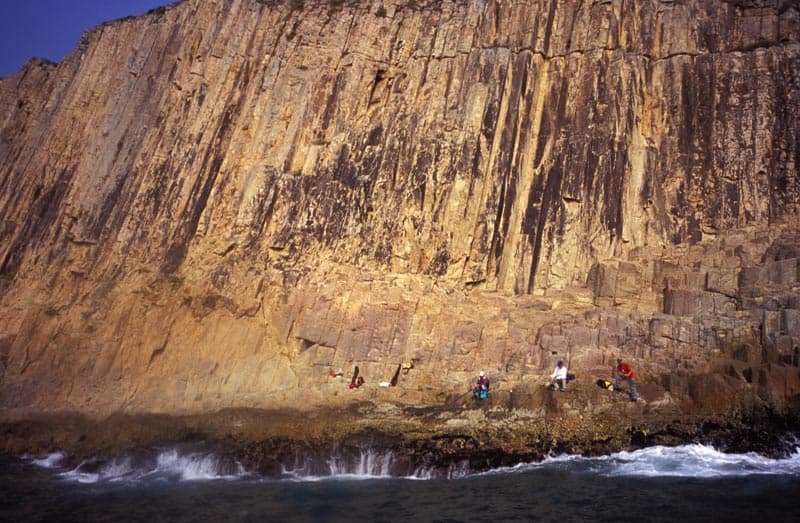
There are excellent exposures of this tuff, with the columns very prominent, on the coast near the east dam of High Island Reservoir, and around nearby Po Pin Chau.
Ung Kong Group of Islands
Lying off the southeast coast of the Sai Kung Peninsula, Bluff Island, Wang Chau and Basalt Island are also made of columnar-jointed tuff (so Basalt Island should perhaps have been named Tuff Island!).
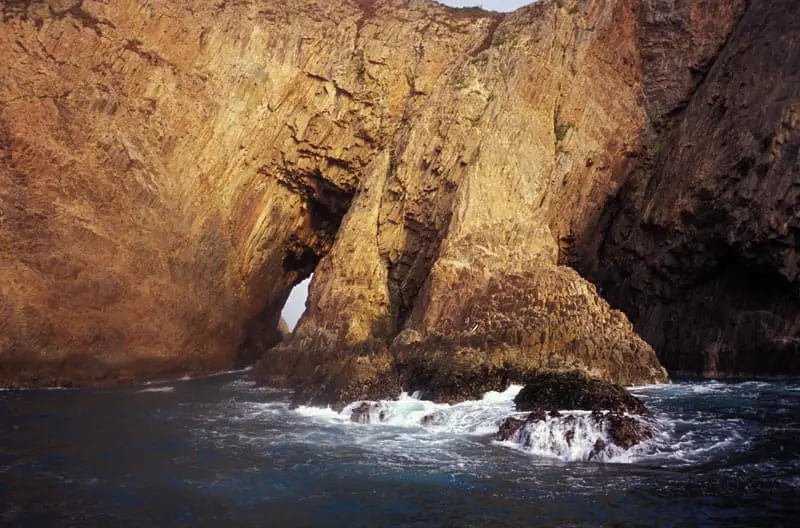
Here, there are sea cliffs, including the 140-metre cliffs of eastern Bluff Island – the highest cliffs in Hong Kong, as well as Hong Kong’s highest sea arches – a 45-metre high arch through Basalt Island and a 50-metre arch through Wang Chau. At northwest Bluff Island, there’s a sheltered cove, with a good coral community.
Ninepin Group
The Ninepin Group – often known as the Ninepins – are likewise formed of the columnar jointed tuff; here, there are columns that are well over a metre wide. Bridled, Roseate and Black-naped terns nest in small colonies, prone to disturbance by people. Looking north over the sea from here, it’s hard to imagine that a volcano once towered over the area, and eventually collapsed in a colossal eruption.

 The Hong Kong Global Geopark comprises eight sites in eastern HK.
The Hong Kong Global Geopark comprises eight sites in eastern HK.

solotraveller
hi is it safe to go to geopark for a solo woman traveller?im from ph.And im considering geoparks in my itinersry
hiking for individuals
Yes, safe [as can be, really – been rare muggings in HK countryside, but large numbers hike etc]
Big thing in summer is the heat, taking enough water or being able to buy more; even tho see you’re from Philippines
Weekends, public holidays, more people in countryside, so might consider this – if any issue, likely to have people around [maybe better to keep to main trails; have a smartphone, as you’d do hiking near home I think]